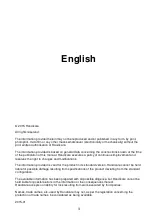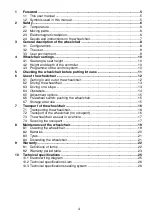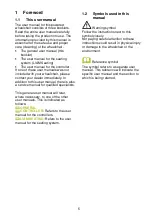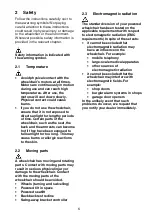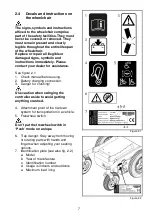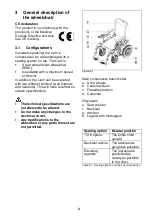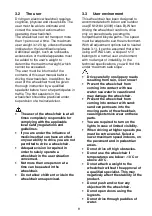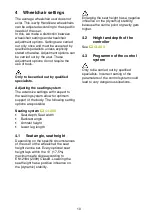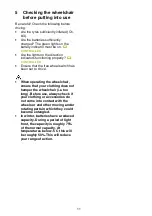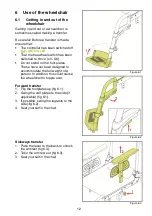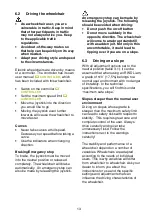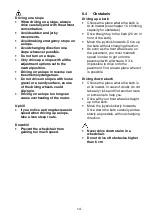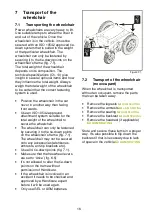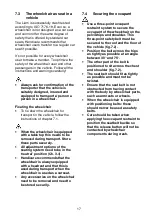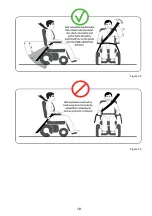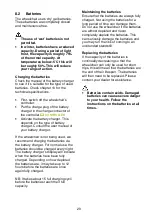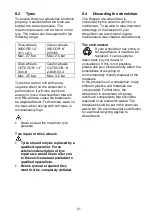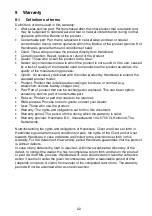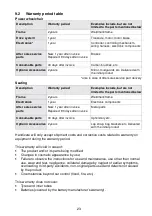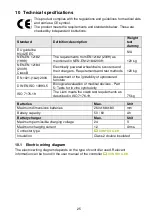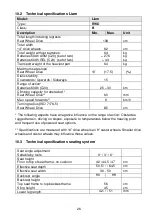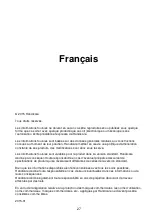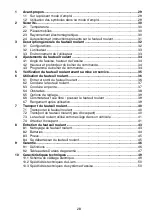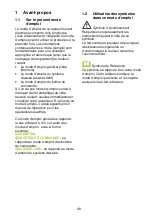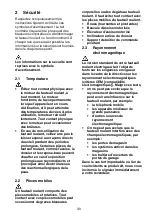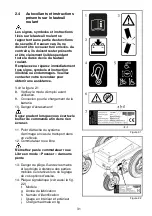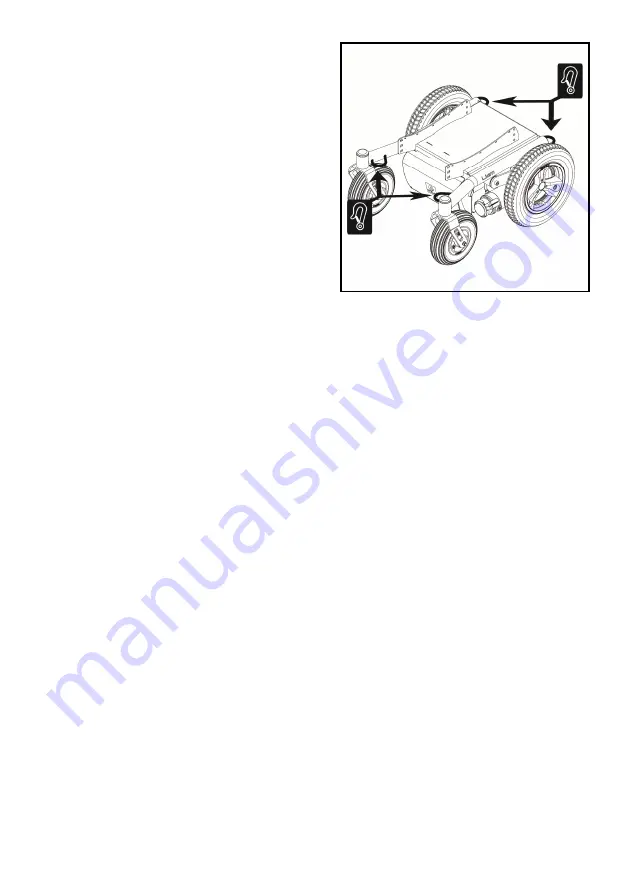
16
7 Transport of the
wheelchair
7.1
Transporting the wheelchair
Power wheelchairs are very heavy to lift.
Use suitable ramps to wheel the chair in
and out of the vehicle. Once the
wheelchair is in the vehicle, it must be
secured with an ISO 10542 approved tie-
down system that is suited to the weight
of that particular wheelchair. The
wheelchair can only be fastened by
securing it to the tie-down points on the
wheelchair’s frame (fig. 7.1).
The total weight of the wheelchair
depends on its composition. The
technical specifications (Ch. 10) give
insight in several optional items and how
they influence the total weight. Always
weigh the total weight of the wheelchair
to be certain that the correct fastening
system is used.
•
Position the wheelchair in the car
never in another way than facing
front wards.
•
Use an ISO 10542 approved
attachment system suitable for the
total weight of the wheelchair to
secure the wheelchair.
•
The wheelchair can only be fastened
by securing it to the tie-down points
on the wheelchair’s frame (fig. 7.1).
The wheelchair may not be secured
onto any accessories (wishbones,
armrests, anti-tip brackets etc.).
•
Use all 4 tie-down points (fig. 7.1).
•
Make sure that the freewheel levers
are set to ‘drive’ (fig. 6.5).
•
It’s not allowed to alter the tie-down
points on the frame without
permission of Handicare.
•
If the wheelchair is involved in an
accident it needs to be checked and
approved by a Handicare expert
before it will be used again.
•
Only use GEL or AGM batteries.
Figure 7.1
7.2
Transport of the wheelchair
(no occupant)
When the wheelchair is transported
without an occupant, remove the parts
that can be taken away.
•
Remove the legrests
LIAM SEATING
•
Remove the armrests
LIAM SEATING
•
Remove the seating
LIAM SEATING
•
Remove the backrest
LIAM SEATING
•
Remove the headrest (if applicable)
LIAM SEATING
Store and secure these items in a proper
way. It’s also possible to flip down the
backrest if that is necessary due to lack
of space in the vehicle
LIAM SEATING


